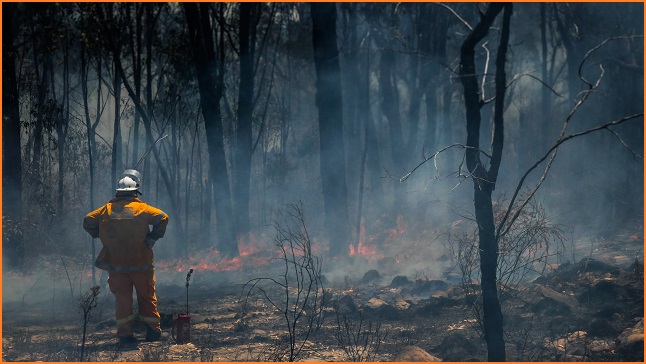The Australian National University (ANU) and Optus are buddying up to build a system of sensors, satellites, and drones they expect will be able to detect and extinguish bushfires within five minutes of ignition.
Research into the ambitious early detection system will soon begin at the ANU-Optus Bushfire Research Centre of Excellence announced on Thursday.
ANU Vice-Chancellor, Professor Brian Schmidt, said “every second counts” when it comes to bushfires.
“As we saw this season, these fires can cause massive destruction to our environment, homes and infrastructure and they cost lives,” he said in a statement.
“That’s why we are building an integrated defence system to protect Australia from catastrophic fires. This will detect and attack fires before they grow.
“ANU is designing and looking to build highly innovative water gliders with autopilots that will extinguish fires within minutes of them igniting.”
A four-year program at the new research centre aims to explore technological solutions to the devastating bushfires that ravage the Australian summer and are only tipped to become more frequent and powerful thanks to climate change.
Optus Enterprise Managing Director, Chris Mitchell, said the looming threat of larger bushfires is a problem that requires collaboration.
“This is what it’s going to take to make a difference to building our nation’s resilience and capabilities for these catastrophic events,” he said.
“We apply innovation to solve issues and improve outcomes, and for communities in areas prone to bushfire, there is no bigger challenge than battling out-of-control fires.
“Our infra-red sensor pilot will be the first of many technologies which tested for early detection, which is absolutely critical to containing disasters before they destroy lives, homes, wildlife and the environment.”
Infra-red camera systems will be deployed on towers in the ACT as the first part of the firefighting program which is aimed at helping the ACT Rural Fire Service (RFS) monitor and contain fires.
“If we are able to improve the speed and accuracy of fire detection it ultimately means we can improve our response and better protect communities and landscapes,” Rohan Scott, Acting Chief Officer of the ACT RFS, said.
Other methods the centre will to enhance early bushfire detection include “ground-based low-power wide area network meshed sensors”, data analytics, satellites, and autonomous drones.
ANU also wants to build unmanned water gliders that can suppress small fires “at any time of day or night and in all weather conditions”.
In January, a Lockheed C-130 air tanker tragically crashed killing three US crew members while fighting fires in NSW.
By the end of the collaboration program, Optus and ANU hope to have laid the foundation of an high-tech national bushfire defense system.










